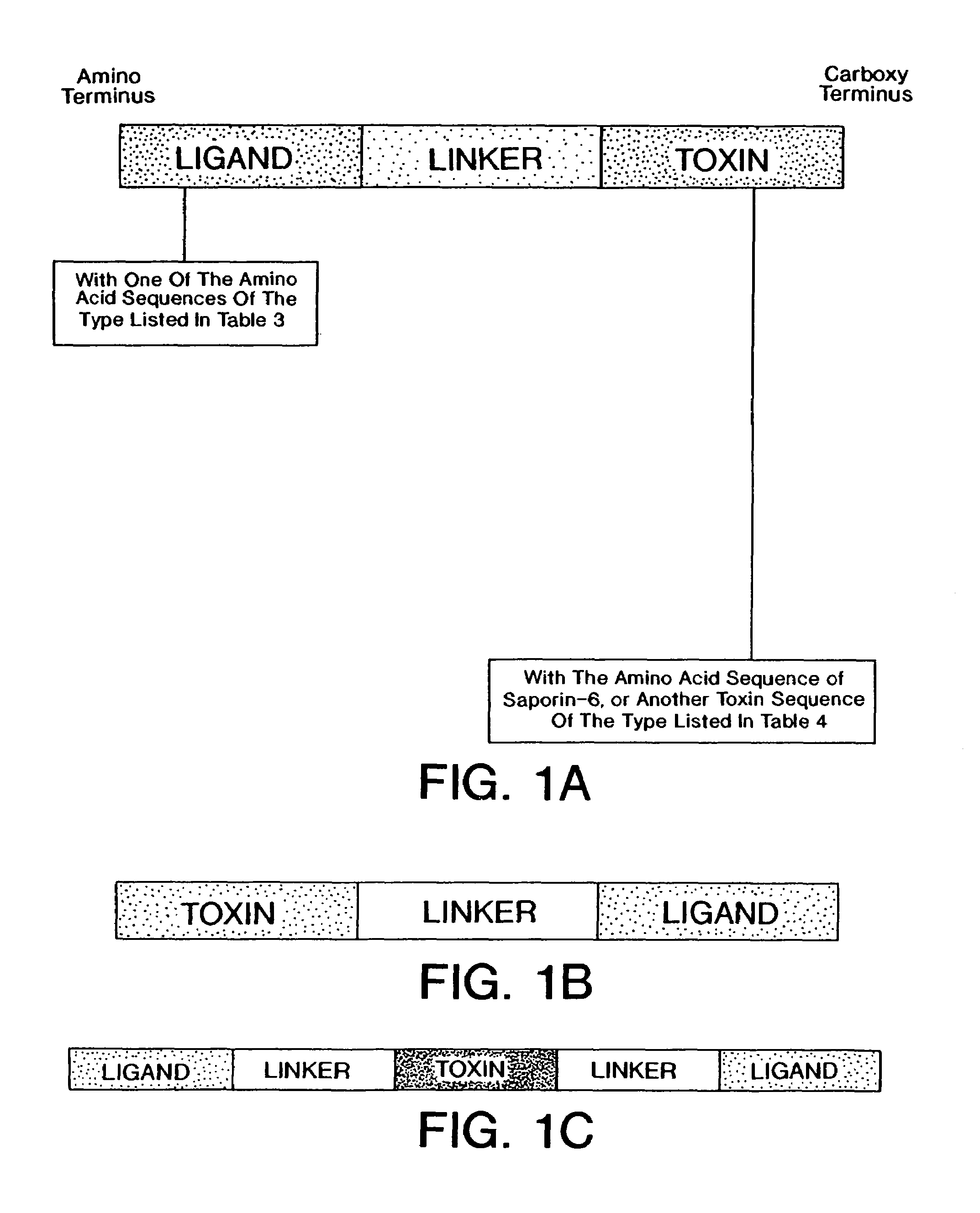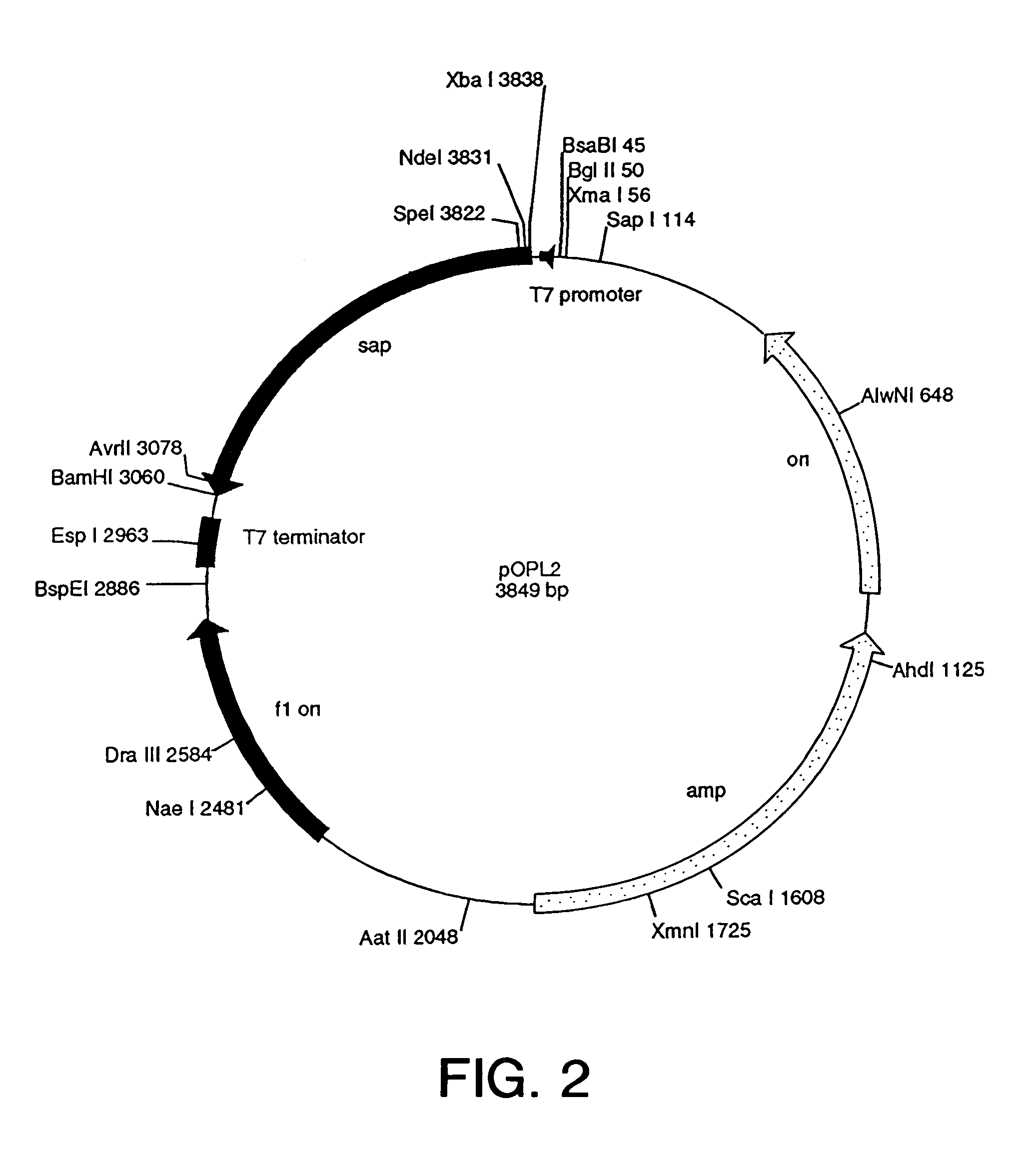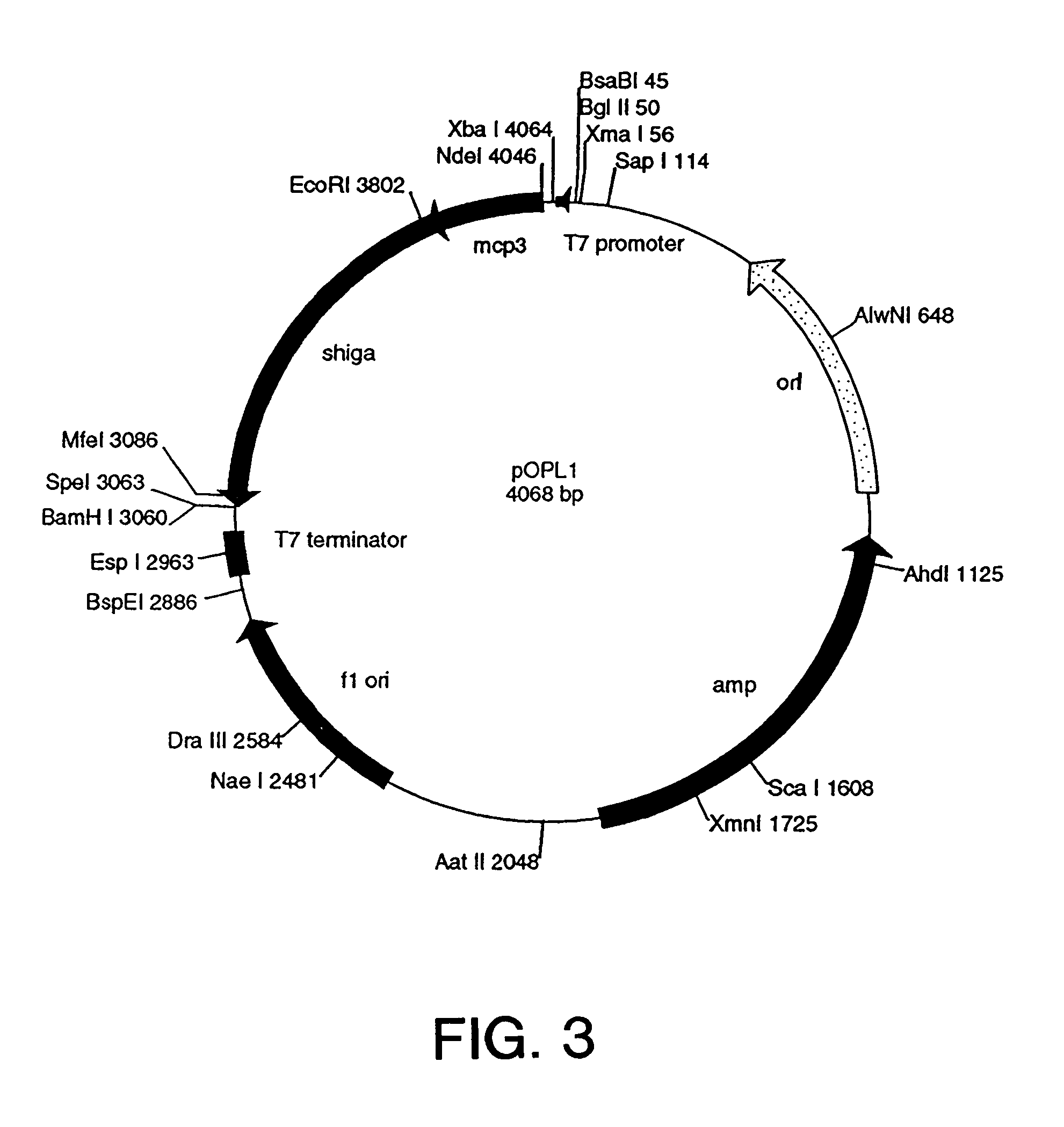Cytotoxic conjugates comprising a chemokine receptor targeting agent
a technology of chemokine receptor and conjugate, which is applied in the field of therapeutic compositions, can solve the problems of direct toxicity of therapeutic agents to non-involved cells, and achieve the effects of facilitating the internalization of associated agents, minimizing damage and toxicity to non-involved cells, and high and more efficacious concentration of cell toxin
- Summary
- Abstract
- Description
- Claims
- Application Information
AI Technical Summary
Benefits of technology
Problems solved by technology
Method used
Image
Examples
example 1
Construction of Genes
[0430]To expedite the development process, a genetic construct, a cassette construct, that facilitates the interchange of fusion protein ligand, toxin, and linker sequences was designed. This “cassette construct” was chemically synthesized with the complete coding sequence of OPL98101 (see Table 6; and see SEQ ID No. 55) in place. The gene was designed such that the fusion protein starts with a methionine (Met) residue followed by the published sequence of mature MCP-3 and an alanine (Ala) residue. This sequence was followed by a Met residue (thereby forming the Ala-Met linker) and residues 23–268 of the Shiga-A1 toxin subunit.
[0431]To facilitate removal and replacement with different ligand and toxin genes, restriction endonuclease sites were incorporated into each gene sequence close to their 3′ and 5′ ends (see, SEQ ID NOs. 52–67). In addition, a second toxin gene, with appropriate internal restriction sites, that codes for the mature form of Saporin-6 (OPL98...
example 2
In Vitro Bioactivity of Selected Chemokine-Toxin Fusion Proteins
[0444]In Vitro Protein Synthesis Inhibition (RIP) Assays
[0445]Fusion protein and free ribosome-inactivating toxin-mediated inhibition of protein synthesis can be measured using a commercially available rabbit reticulocyte lysate system that assays the translation of luciferase RNA (Promega, Madison, Wis.). Briefly, samples were serially diluted in 20 Mm Tricine, Ph 7.8, and 5 μl of diluted protein was combined with 5 ul of reaction mix (50 μg / ml of luciferase RNA, 0.1 Mm amino acid mixture minus methionine) and 15 μl of rabbit reticulocyte lysate. In addition to several negative controls (buffer and a reagent blank), free Saporin (0.03–1 Nm) was used as a positive control. Samples were incubated at 30° C. for 1 hour before 2.5 μl of reaction mixture was transferred to a Dynex 96-well plate (Dynex Technologies Inc. Chentilly, Va.), and analysed using a preheated (30° C.) LUMIstar* luminometer (BMG Lab Technologies, Durha...
example 3
Preparation of a Chemically Linked Chemokine-Toxin Conjugates
[0477]Attaching a Bifunctional Crosslinker Via Primary Amine Groups
[0478]A bifunctional crosslinker is used to link a monoclonal antibody (IgG) to a compound having a primary amine as follows: The crosslinker used is N-succinimidyl 3-(2-pyridyldithio)propionate (SPDP), sulfosuccinimidyl 6-exanoate (Sulfo-LC-SPDP), or sulfosuccinimidyl 6-(3′(2-pyridyldithio)-propionamindo)hexanoate (Pierce Chemicals, Rockford, Ill.). The toxin and the IgG are initially derivatized with the crosslinker.
[0479]To 10 mg of toxin in 1.0 ml PBS is added a 20 Nm stock solution of the crosslinker prepared according to the manufacturer's instruction, and the mixture is stirred for 30 minutes at room temperature. To remove the unconjugated cross-linker, the sample is applied to a 5 or 10 ml desalting column equilibrated with PBS, and 1 ml fractions are collected, the absorbance is monitored at 280 nm, and the peak fractions are determined and pooled....
PUM
| Property | Measurement | Unit |
|---|---|---|
| pH | aaaaa | aaaaa |
| molecular weight | aaaaa | aaaaa |
| pH | aaaaa | aaaaa |
Abstract
Description
Claims
Application Information
 Login to View More
Login to View More - R&D
- Intellectual Property
- Life Sciences
- Materials
- Tech Scout
- Unparalleled Data Quality
- Higher Quality Content
- 60% Fewer Hallucinations
Browse by: Latest US Patents, China's latest patents, Technical Efficacy Thesaurus, Application Domain, Technology Topic, Popular Technical Reports.
© 2025 PatSnap. All rights reserved.Legal|Privacy policy|Modern Slavery Act Transparency Statement|Sitemap|About US| Contact US: help@patsnap.com



